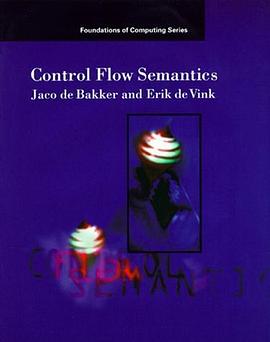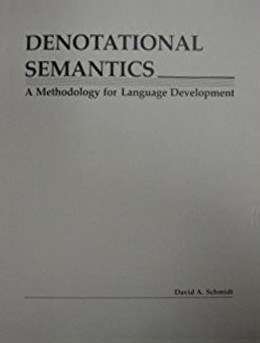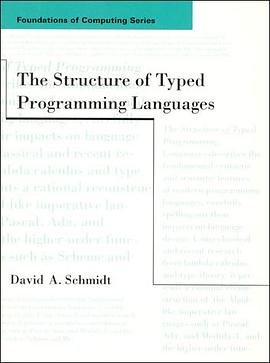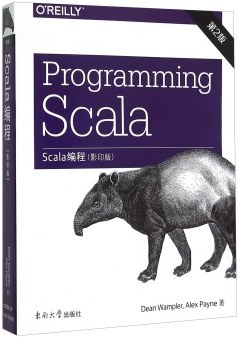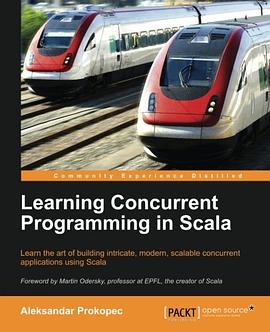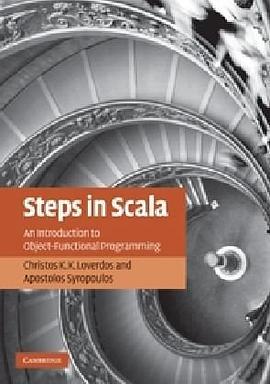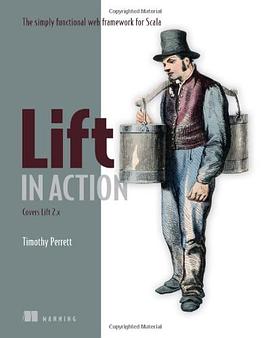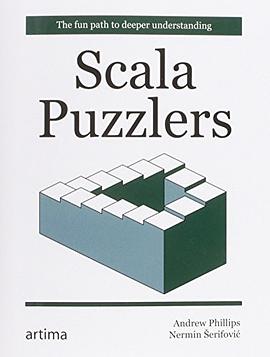

具体描述
This book is for people who have done some programming, either in Prolog or in a language other than Prolog, and who can find their way around a reference manual. The emphasis of this book is on a simplified and disciplined methodology for discerning the mathematical structures related to a problem, and then turning these structures into Prolog programs. This book is therefore not concerned about the particular features of the language nor about Prolog programming skills or techniques in general. A relatively pure subset of Prolog is used, which includes the 'cut', but no input/output, no assert/retract, no syntactic extensions such as if then-else and grammar rules, and hardly any built-in predicates apart from arithmetic operations. I trust that practitioners of Prolog program ming who have a particular interest in the finer details of syntactic style and language features will understand my purposes in not discussing these matters. The presentation, which I believe is novel for a Prolog programming text, is in terms of an outline of basic concepts interleaved with worksheets. The idea is that worksheets are rather like musical exercises. Carefully graduated in scope, each worksheet introduces only a limited number of new ideas, and gives some guidance for practising them. The principles introduced in the worksheets are then applied to extended examples in the form of case studies.
作者简介
目录信息
1.1 Syntax
1.2 Programs
1.3 Unification
1.4 Execution Model
Worksheet 1: Party Pairs
Worksheet 2: Drinking Pairs
Worksheet 3: Affordable Journeys
Worksheet 4: Acyclic Directed Graph
2. Data Structures
2.1 Square Bracket Notation
Worksheet 5: Member
2.2 Arithmetic
Worksheet 6: Length of a List
Worksheet 7: Inner Product
Worksheet 8: Maximum of a List
Worksheet 9: Searching a Cyclic Graph
3. Mapping
Worksheet 10: Full Maps
Worksheet 11: Multiple Choices
Worksheet 12: Partial Maps
Worksheet 13: Removing Duplicates
Worksheet 14: Partial Maps with a Parameter
Worksheet 15: Multiple Disjoint Partial Maps
Worksheet 16: Multiple Disjoint Partial Maps
Worksheet 17: Full Maps with State
Worksheet 18: Sequential Maps with State
Worksheet 19: Scattered Maps with State
4. Choice and Commitment
4.1 The ‘Cut’
4.2 A Disjoint Partial Map with Cut
Worksheet 20: Multiple Choices with Cut
Worksheet 22: Ordered Search Trees
Worksheet 23: Frequency Distribution
4.3 Taming Cut
4.4 Cut and Negation-as-Failure
4.5 Negation-as-Failure Can Be Misleading
Worksheet 24: Negation-as-Failure
5. Difference Structures
Worksheet 25: Concatenating Lists
Worksheet 26: Rotations of a List
Worksheet 27: Linearising
5.1 Difference Lists
Worksheet 28: Linearising Efficiently
Worksheet 29: Linearising Trees
Worksheet 30: Difference Structures
Worksheet 31: Rotation Revisited
Worksheet 32: Max Tree
5.2 Solution to Max Tree
6. Case Study: Term Rewriting
6.1 Symbolic Differentiation
6.2 Matrix Products by Symbolic Algebra
6.3 The Simplifier
7. Case Study: Manipulation of Combinational Circuits
7.1 Representing Circuits
7.2 Simulation of Circuits
7.3 Sums and Products
7.4 Simplifying SOP Expressions
7.5 Alternative Representation
8. Case Study: Clocked Sequential Circuits
8.1 Divide-by-Two Pulse Divider
8.2 Sequential Parity Checker
8.3 Four-Stage Shift Register
8.4 Gray Code Counter
8.5 Specification of Cascaded Components
9. Case Study: A Compiler forThree Model Computers
9.1 The Register Machine
9.2 The Single-Accumulator Machine
9.3 The Stack Machine
9.4 Optimisation: Preprocessing the Syntax Tree
9.5 Peephole Optimisation
10. Case Study: The Fast Fourier Transform in Prolog
10.1 Introduction
10.2 Notation for Polynomials
10.3 The DFT
10.4 Example: 8-point DFT
10.5 Naive Implementation of the DFT
10.6 From DFT to FFT
10.7 Merging Common Subexpressions
10.8 The Graph Generator
10.9 Example Run: 8-point FFT
10.10 Bibliographic Notes
11. Case Study: Higher-Order Functional Programming
11.1 Introduction
11.2 A Notation for Functions
11.3 The Evaluator
11.4 Using Higher-Order Functions
11.5 Discussion
11.6 Bibliographic Notes
· · · · · · (收起)
读后感
评分
评分
评分
评分
用户评价
相关图书
本站所有内容均为互联网搜索引擎提供的公开搜索信息,本站不存储任何数据与内容,任何内容与数据均与本站无关,如有需要请联系相关搜索引擎包括但不限于百度,google,bing,sogou 等
© 2025 book.quotespace.org All Rights Reserved. 小美书屋 版权所有

